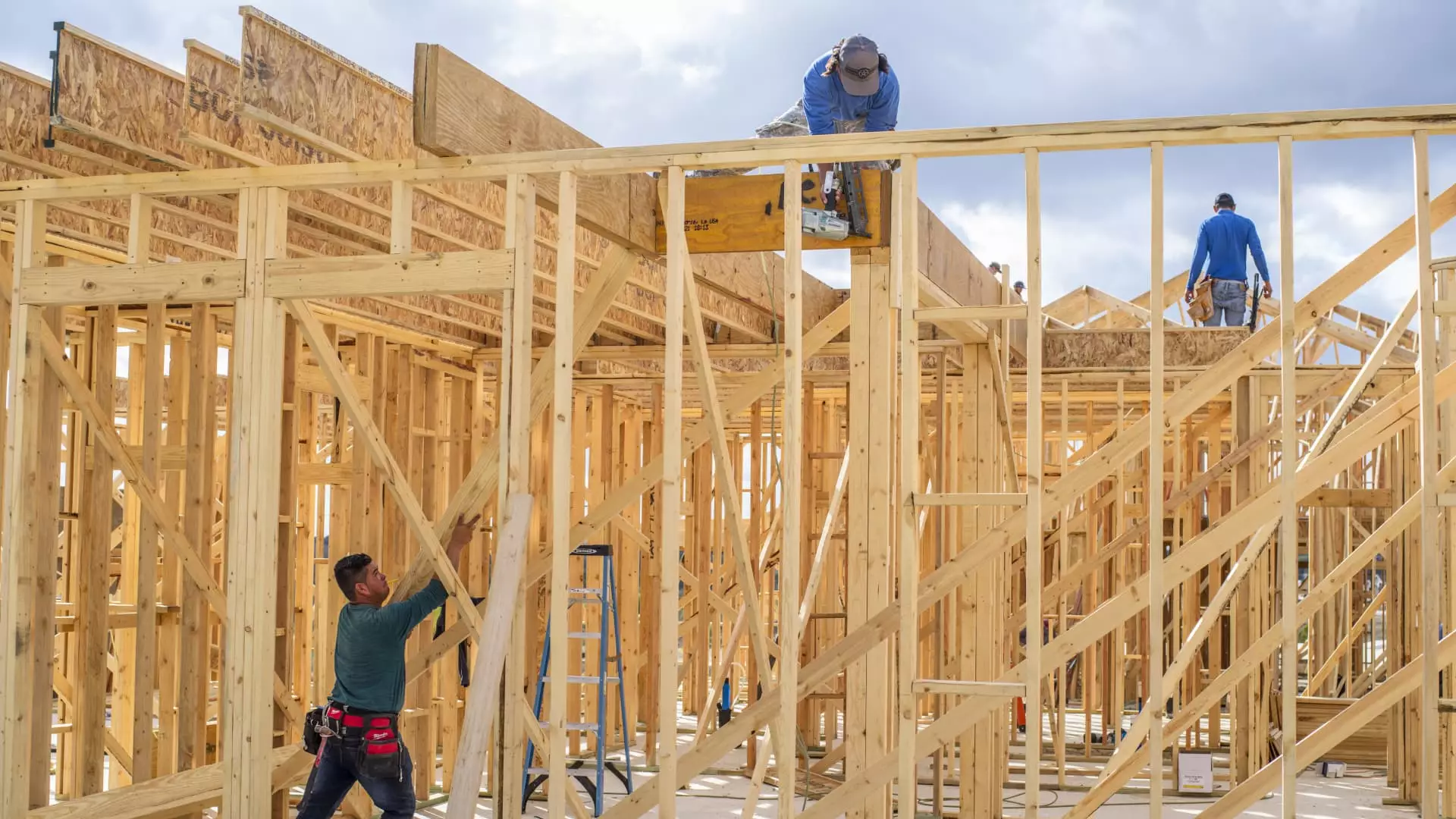Challenges in the U.S. Housing Market: A Cautious Outlook for Builders

The current landscape of single-family homebuilding in the United States indicates a worrying downward trend, with builders expressing concerns about rising costs and changing market conditions. In February, the National Association of Home Builders’ (NAHB) Housing Market Index (HMI) hit a five-month low, decreasing to a score of 42. This figure is particularly significant as it falls below the 50-point threshold which delineates negative sentiment, reflecting a challenging climate for homebuilders. This contraction in confidence can primarily be attributed to escalating costs linked to tariffs and market fluctuations that have created a precarious environment for construction.
January typically inspires optimism as the housing market gears up for the spring selling season. However, February’s drop in the HMI by five points showcases the concerns builders feel regarding the economic landscape. Among the HMI’s three key components, current sales conditions slipped by four points to 46, indicating a decrease in builder perceptions of sales activity. Moreover, future sales expectations saw a stark decline of 13 points to a new low of 46, reflecting a more pessimistic outlook for the coming months.
The fundamental drivers of this sentiment include complications arising from tariffs that are poised to inflate costs substantially. As highlighted by NAHB Chief Economist Robert Dietz, the home construction industry relies heavily on international trade, with significant portions of appliances and softwood lumber sourced from abroad. Any instability in these supply lines, compounded by tariffs, translates directly to higher expenses for builders—a factor that further dampens their outlook.
Compounding the issues of heightened costs is the ongoing challenge of housing affordability, exacerbated by rising mortgage rates. The average 30-year fixed mortgage rate, which hovered over 7% in January and February, poses a significant hurdle to prospective homebuyers, curtailing demand. It serves as a reminder that, notwithstanding the modest gains made by single-family housing starts in prior months, the overall sentiment is marred by affordability challenges that leave both builders and buyers in a precarious situation.
As home prices continue to rise, the ability of potential buyers to enter the market diminishes. Builder reports consistently signal a decrease in demand, reinforcing the notion that the market is facing significant headwinds. PulteGroup CEO Ryan Marshall pointed out that even with the Federal Reserve’s efforts to lower short-term interest rates, the elevated mortgage rates have had adverse effects on buyer interest, underpinning the prevailing affordability crisis.
With the spring market, historically a crucial period for sales, on the horizon, the slowdown in builder sentiment could portend a contraction in available housing inventory. Current trends suggest that the proportion of builders reducing prices has fallen to its lowest since May 2024—a sign that price adjustments may be less effective in stimulating buyer interest in a landscape marked by high rates and inflated prices. The decreasing effectiveness of traditional sales incentives further complicates this scenario, as builders grapple with meeting their sales goals in an increasingly challenging environment.
The repercussions of these trends extend far beyond builders; they affect the entire housing ecosystem, from suppliers to buyers. Builders are left to navigate a complex array of factors that are significantly impacting their operational strategies. When the market becomes limited, securing sales becomes an increasingly difficult task, particularly as the pool of potential buyers shrinks due to diminished affordability.
The dip in sentiment among U.S. homebuilders signals a challenging road ahead, characterized by rising costs and dwindling buyer interest. While builders hope for favorable policy reforms, the current trajectory indicates that market conditions may lead to a more cautious approach moving forward. As the industry adapts to these changing dynamics, the focus remains on understanding how best to navigate the interplay of cost pressures, market demands, and the overarching imperative of affordability, all of which will define the future of the housing market in the coming months.





